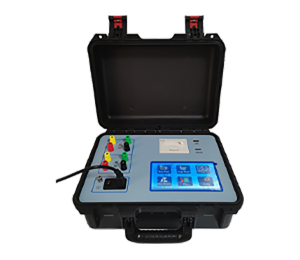 English
English


Transformer Winding Temperature Monitoring
Transformer Winding Temperature Monitoring Ensuring Reliability and Efficiency
Transformers play a crucial role in electrical power systems, facilitating the efficient transmission and distribution of electricity. One of the key factors influencing their performance and lifespan is the temperature of the windings. Excessive temperatures can lead to insulation degradation, reduced efficiency, and ultimately, transformer failure. Therefore, effective monitoring of transformer winding temperature is essential for maintaining the reliability and efficiency of power systems.
The primary function of a transformer winding temperature monitoring system is to provide real-time data on the operational conditions of the transformer. This data allows operators to detect overheating early and take necessary actions to prevent damage. Various methods exist for monitoring winding temperature, including resistance temperature detectors (RTDs), thermocouples, and fiber optic sensors. Each of these technologies has its advantages, enabling monitoring with varying degrees of accuracy and response time.
1. Importance of Monitoring
The internal temperature of transformer windings is influenced by several factors, including load conditions, ambient temperature, and cooling mechanisms. As load increases, so does the temperature of the windings due to the increased electrical resistance. This phenomenon is particularly pronounced during peak demand periods, where transformers are pushed to their limits. By continuously monitoring the temperature, operators can ascertain whether the transformer is operating within safe limits.
If temperature rises beyond acceptable thresholds, proactive measures can be taken. This might include reducing the load on the transformer, enhancing cooling mechanisms, or scheduling maintenance to address potential issues. Early detection of temperature anomalies can significantly extend the service life of transformers and reduce the risk of unexpected outages.
transformer winding temperature monitoring

2. Advanced Monitoring Technologies
Modern transformer monitoring systems are equipped with sophisticated technologies that leverage IoT (Internet of Things) capabilities. These systems provide a comprehensive view of transformer health, not only monitoring temperature but also other parameters like humidity, vibration, and dissolved gas analysis. Data collected can be transmitted to a central management system, where algorithms analyze trends and predict potential failures.
The integration of machine learning into these systems further enhances their capabilities. By analyzing historical data, machine learning models can identify patterns and predict future temperature spikes, allowing for proactive management. This predictive maintenance approach not only helps in preventing faults but also optimizes operational efficiency.
3. Conclusion
In conclusion, transformer winding temperature monitoring is a fundamental aspect of power system management that ensures the reliability and efficiency of transformers. With advancements in technology, operators now have access to sophisticated monitoring solutions that facilitate real-time data analysis and predictive maintenance. By prioritizing the monitoring of winding temperatures, utility companies can mitigate risks, extend transformer life, and enhance overall system performance, thereby ensuring the uninterrupted delivery of electricity to consumers. As the demand for electricity continues to grow, so too does the importance of effective transformer monitoring in safeguarding our energy infrastructure.
-
Differences between open cup flash point tester and closed cup flash point testerNewsOct.31,2024
-
The Reliable Load Tap ChangerNewsOct.23,2024
-
The Essential Guide to Hipot TestersNewsOct.23,2024
-
The Digital Insulation TesterNewsOct.23,2024
-
The Best Earth Loop Impedance Tester for SaleNewsOct.23,2024
-
Tan Delta Tester--The Essential Tool for Electrical Insulation TestingNewsOct.23,2024





